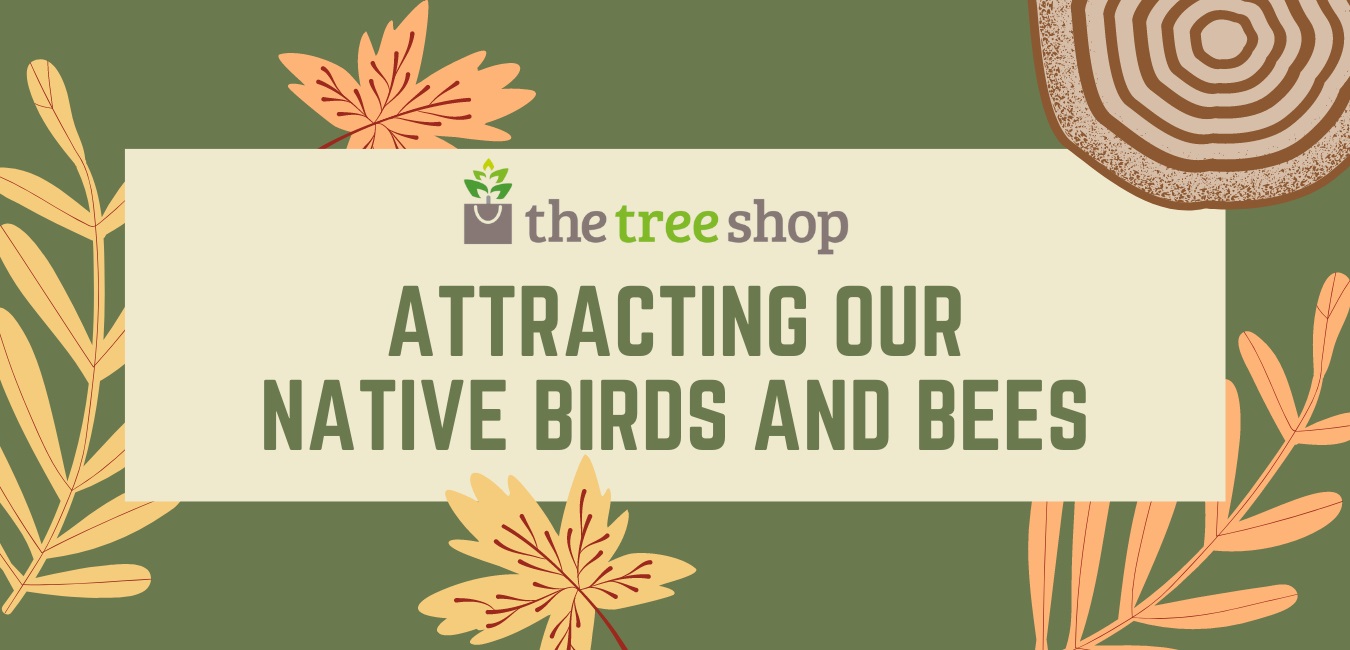
We can always rely on our stunning Aussie natives to cheer us up over the gloomy winter months! Luckily for us, this is the time of year many of them are putting on their best performance. Not only does this bring our Melbourne gardens a much-needed pop of colour over the cooler months, but they also provide food for our native birds and bees!
Australian Native bees do not go into hibernation or dormancy over winter, like their European cousins do.
We have such a variety of awe-inspiring native bees that if you take the time and watch closely you will spot in your very own garden! One to look out for is the Blue Banded Bee, a very popular and friendly bee that displays stripes of sky-blue in place of the yellow stripes on a regular honeybee… How pretty is that?
These are some Australian Native plants that native birds and bees will LOVE and can provide a valuable food resource for them over the winter months:
Elaeocarpus reticulata
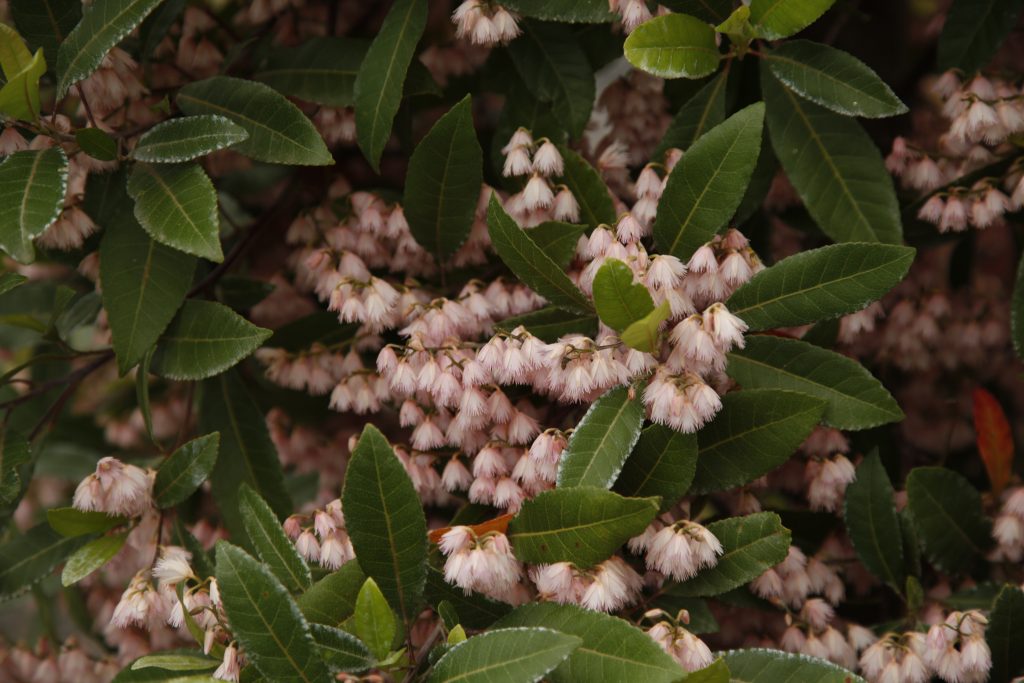
The Blueberry Ash is very special to native wildlife as it attracts both native birds and bees! The pretty bell-like flowers are bee attracting and the bright blue berries that follows during Winter attracts seed-eating native birds. Plant it in your garden in a sunny or partly shaded area to enjoy its gorgeous frilly flowers and to attract the birds and bees!
Callistemon Species
Callistemons, also known as Bottle Brushes, are a popular plant among gardeners and wildlife alike. Their flowers come in a range of pinks, reds and white and are a valuable food source to birds and bees. They are a great choice for hot and dry spots in the garden and require little attention. Callistemons make an excellent informal hedge, as they are evergreen and have a screening effect. The unusual woody fruits form in clusters along the stem and provide interesting feature all year round.
Grevillea Species
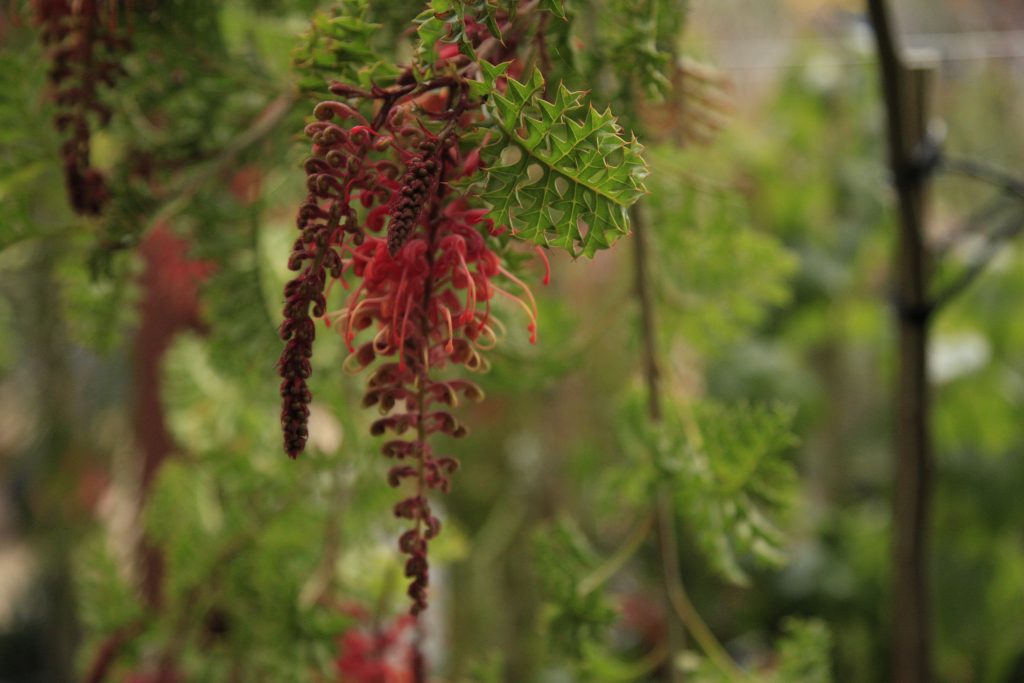
This genus of plants attracts native birds. Yellow and red flowering species are known to be particularly attractive to them. Many Grevilleas come in these colours and their flowers contain a nectar which native birds go WILD for. The dense and prickly foliage also provides a safe habitat and excellent nesting site. And the bees love them too! What more could you ask for?
Corymbia ficifolia
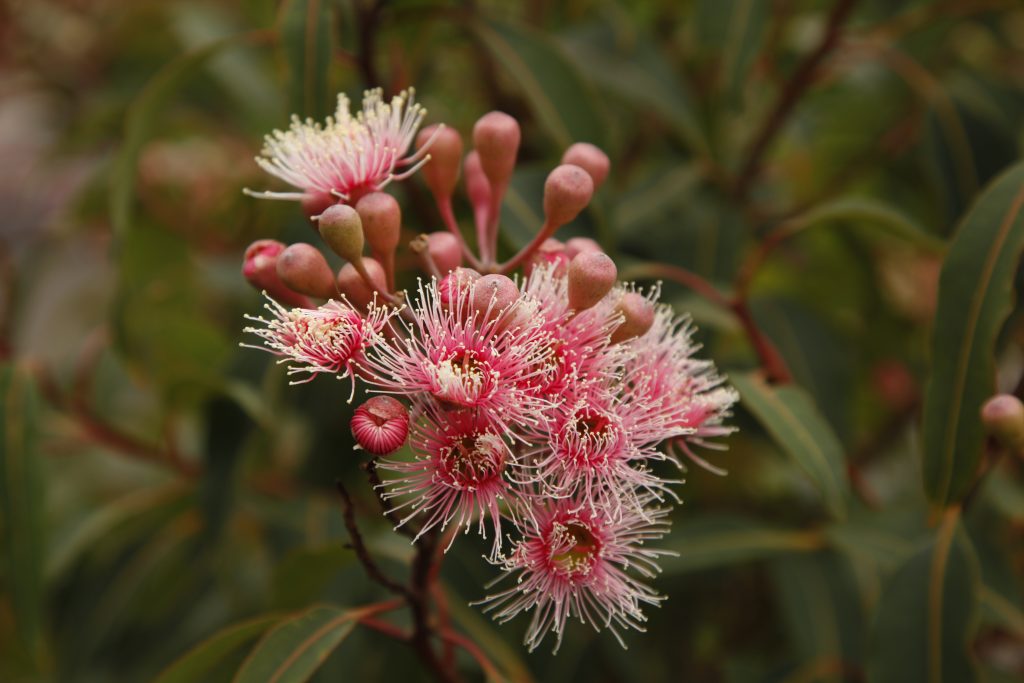
The birds and bees love this tree more than any other! It is laden with pollen-rich flowers for many months of the year, providing food resources to our native birds and bees multiple times during the year. They also make a fantastic feature tree and come in many different colours and sizes including white, red, pink orange and more!
Westringia fruticosa
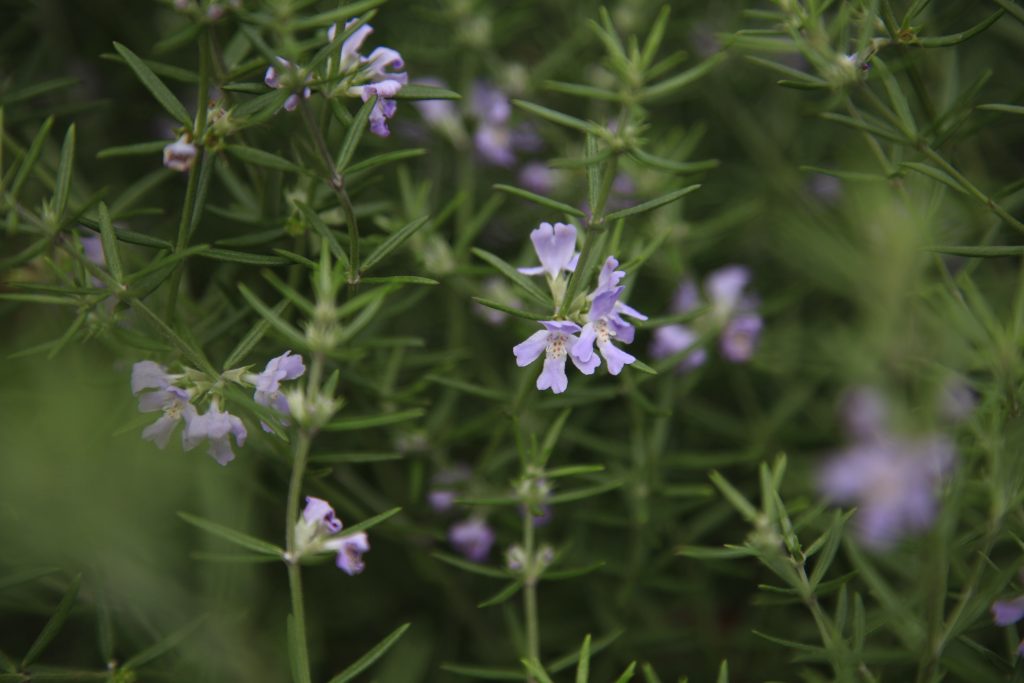
This plant, often referred to as Native Rosemary, can flower all year round, which makes them an invaluable resource to bees. Its flowers are blueish in colour which the bees prefer. Particularly long-tonged bees, like our friend the Blue Banded Bee, and the very cute Teddy Bear Bee.
Correa Species
This genus of plants consists of evergreen shrubs with beautiful bell-like flowers which are present throughout winter and come in array of spectacular colours including pink, red, orange, white, cream, green, yellow, and even combinations of a few! They are tolerant of many soil types and can be planted in your garden in a shady or partly shaded spot, and many of them can also tolerant a sunny position…what a truly versatile plant! These plants are loved by birds and bees alike. Crimson rosellas actually eat the entire flowers, and the tubular shaped flowers are just the right shape for the Eastern Spinebill bird to access the nectar. Wrens, Honey Eaters and King Parrots also love this plant. Trust us that the list could go on!
Banksia Species
Banksias are an iconic Australian plant. Their conical flowers are long-lasting and are an attractive feature wherever they are placed in the garden. Once established, they can bear flowers for almost all months of the year which can attract larger birds like the majestic yellow tail Black Cockatoos. Birds and beneficial insects feed on the nectar and like to create habitat amongst the protective foliage. Banksia species can be found in various forms from large trees to prostrate ground covers, so there is an option to suit anyone! They can be used in a variety of garden styles, whether it is an all-native coastal garden or a potted modern balcony, a Banksia could be the perfect addition to that sunny and dry spot that nothing else will grow in!

